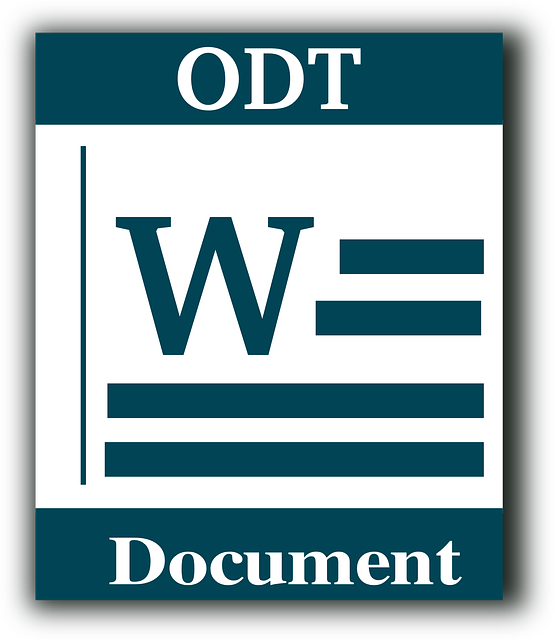
In the realm of digital documents, Microsoft Word has long been the dominant force, known for its versatility and widespread use across various platforms. However, another file format, ODT (Open Document Text), often enters the picture, especially for users of open-source software like LibreOffice. A common question arises: Can Word open ODT files? The answer is a resounding yes, but with some nuances. In this post, we will explore the intricacies of opening ODT files in Word, the advantages and limitations of doing so, and why you might choose one format over the other.
Understanding ODT Files
ODT is a file format used by OpenOffice and LibreOffice, popular open-source alternatives to Microsoft Office. The format is part of the Open Document Format (ODF) family, which aims to provide a standard for documents that is not tied to a single software vendor. ODT files are similar to DOCX files used by Microsoft Word, but they are based on different underlying technologies and standards.
Opening ODT Files in Microsoft Word
As of Microsoft Word 2007 with Service Pack 2 and later versions, including Word 2010, 2013, 2016, 2019, and Word for Microsoft 365, you can directly open ODT files. Here’s a step-by-step guide on how to do it:
- Open Microsoft Word: Launch the Word application on your computer.
- File Menu: Click on the “File” menu at the top-left corner of the window.
- Open: Select “Open” from the menu.
- Browse: In the Open dialog box, navigate to the location of your ODT file.
- Select ODT File: Choose the ODT file you want to open and click “Open”.
Word will now open the ODT file, allowing you to view and edit its content. This feature is incredibly convenient, especially for users who frequently work with documents from various sources.
Pros of Opening ODT Files in Word
- Compatibility: One of the primary advantages of opening ODT files in Word is the ability to maintain compatibility with colleagues and clients who use different office suites. This flexibility ensures that you can work seamlessly with others without worrying about file format issues.
- Familiar Interface: For users who are accustomed to the Microsoft Office interface, opening ODT files in Word means they don’t have to learn a new software application. This can save time and improve productivity.
- Editing Capabilities: Word offers robust editing tools that may not be available in other office suites. By opening ODT files in Word, you can take advantage of these features to enhance your documents.
Cons of Opening ODT Files in Word
- Formatting Issues: One of the main challenges when opening ODT files in Word is the potential for formatting issues. Since ODT and DOCX formats use different underlying structures, certain elements such as fonts, images, and layout may not appear as intended. Users should carefully review the document to ensure it retains its original formatting.
- Limited Support for Advanced Features: Some advanced features specific to ODT files may not be fully supported in Word. This can result in loss of functionality or the need for manual adjustments.
- Interoperability Concerns: While Word can open and edit ODT files, saving them back to ODT format can sometimes lead to compatibility issues. It’s important to verify that the document works correctly in its original application if you need to share it with users who rely on ODT files.
Alternatives to Opening ODT Files in Word
While opening ODT files in Word is possible, there are scenarios where it might be more effective to use other tools. Here are a few alternatives:
- LibreOffice: LibreOffice is a free and open-source office suite that natively supports ODT files. It’s an excellent alternative for users who frequently work with ODT documents and want to avoid compatibility issues. Download LibreOffice.
- Google Docs: Google Docs is a web-based application that supports ODT files. By uploading an ODT file to Google Drive, you can open and edit it in Google Docs, then save it back to ODT or export it to other formats. This option is convenient for users who prefer working in the cloud. Try Google Docs.
- Online Converters: Various online tools can convert ODT files to DOCX format, making them easier to open in Word. While this adds an extra step, it can be useful if you encounter persistent compatibility issues. Examples include Zamzar and Online-Convert.
Why Choose ODT Over DOCX?
Despite the compatibility offered by DOCX files, there are several reasons why someone might prefer to use ODT files:
- Open Standards: ODT files are based on open standards, ensuring long-term accessibility and reducing dependency on specific software vendors. This can be particularly important for organizations that prioritize data sovereignty and open-source solutions.
- Cost: OpenOffice and LibreOffice are free to use, making ODT files a cost-effective choice for individuals and organizations looking to avoid the expense of Microsoft Office licenses.
- Interoperability: ODT files can be opened and edited by a wide range of office suites, providing flexibility for users who work in diverse software environments.
Final Thoughts
In conclusion, Microsoft Word can indeed open ODT files, offering a valuable solution for users who need to work with documents from different office suites. While there are some potential drawbacks, such as formatting issues and limited support for advanced features, the ability to open ODT files in Word enhances compatibility and convenience.
For users who frequently encounter ODT files, considering alternative tools like LibreOffice or Google Docs might be beneficial. However, the decision ultimately depends on your specific needs and workflow.
By understanding the capabilities and limitations of opening ODT files in Word, you can make informed choices that best suit your document management practices. For more information on Microsoft Word and its features, visit the official Microsoft Word page.